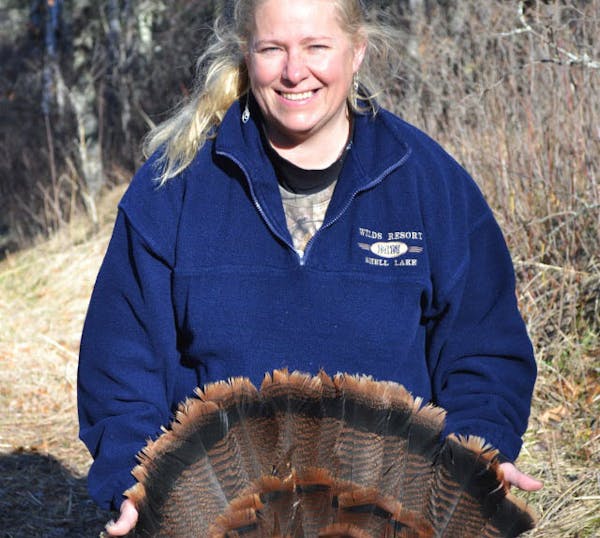Tuesday near the Capitol, a handful of farmers stepped forward to say that Minnesota's rivers and ditches need buffers of grass, alfalfa or other perennials. About 40 percent of these types of state waterways have buffers now, which is a start.
But if Minnesota, its farmers and farm animals — and the rest of us — are going to have the clean water we all need, changes in the way we care for water as it flows through the countryside are necessary.
And buffer bills now being considered in the Legislature are a good place to start.
Among those who made the pilgrimage to St. Paul on Tuesday from points distant was James Kanne, who lives in Renville County, which each year is either tops or second among Minnesota counties in corn and soybean production. Though never a hunter, Kanne, in addition to being a dairy farmer, is historian enough to know Renville County was once better duck habitat than crop habitat.
Drainage that began in the late 1800s changed the former into the latter.
"What happens to water as it goes through my farm is my responsibility," Kanne said, noting that in his part of the state, the amount of drain tile laid by farmers has doubled every two years for the past 10 years, significantly altering the region's hydrology.
"We need to get [buffer requirements] in place because, as a farmer, I'm not the problem,'' Kanne said. "But I'm part of the problem. And I will be part of the solution.''
Not so fast, say lobbyists who have plied the Capitol's hallways in St. Paul this session representing Minnesota farm and commodity groups. Their objective since Gov. Mark Dayton announced his buffer initiative in January has been to weaken, stall and/or kill the proposal. Keep the dirty water flowing, they seem to say.
They also say farmers would lose money converting lands to grass that in some instances are now cropped to the very edges of ditches and rivers, contributing to bank sloughing and generalized erosion. But in fact money would be available from state and federal farm and conservation programs to help cover conversion costs, and farmers can also draw annual conservation payments.
Buffer critics also argue that Dayton is proposing 50-foot "one size fits all'' buffers. But, in fact, local Soil and Water Conservation District offices are well prepared to customize solutions for landowners that produce the desired water-cleansing results.
Dakota County farmer Dave Legvold came to St. Paul on Tuesday to support the buffer plan. "I'm disappointed that farm groups have come out in opposition,'' he said.
So is Josh Reinitz, who farms in Le Sueur County. "I believe all farms should be taking steps to make sure water that is flowing through their farms is not causing destruction downstream,'' Reinitz said.
Sounds reasonable.
And long overdue.
Dennis Anderson danderson@startribune.com

Anderson: Celebrate Earth Day by rekindling real connection to nature
Anderson: Anglers protesting tough new Mille Lacs rules are wrong

Anderson: Courts, not politicians, should rule on Red Lake, White Earth lands

Anderson: Multimillion windfall gets invasive carp deterrent moving
![A young whitetail deer searches for food as another blanket of snow coats the arrowhead. ] Minnesota -State of Wonders, Arrowhead in Winter BRIAN PETE](https://arc.stimg.co/startribunemedia/WK32UWWY6FKNWJUIYCJ6ZPT4AU.jpg?h=91&w=145&fit=crop&bg=999&crop=faces)

